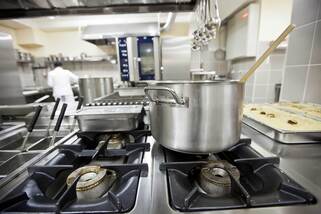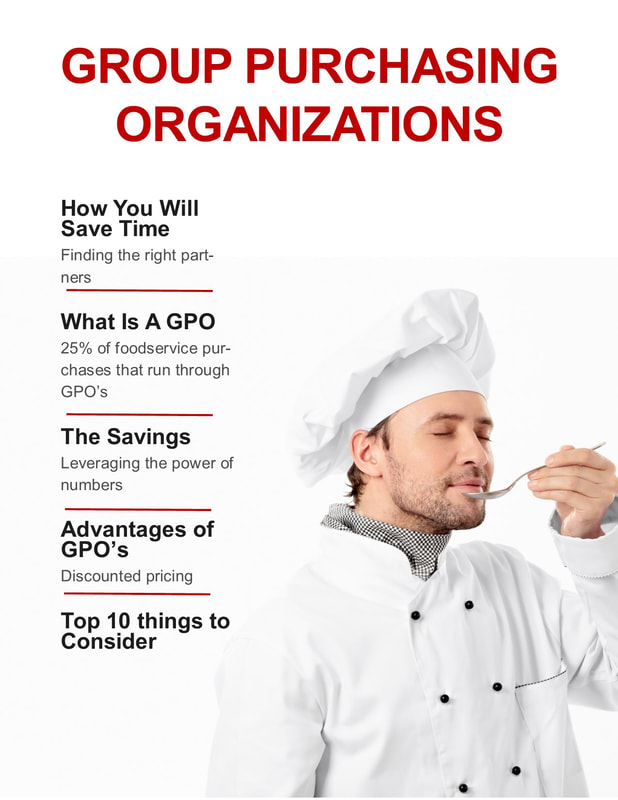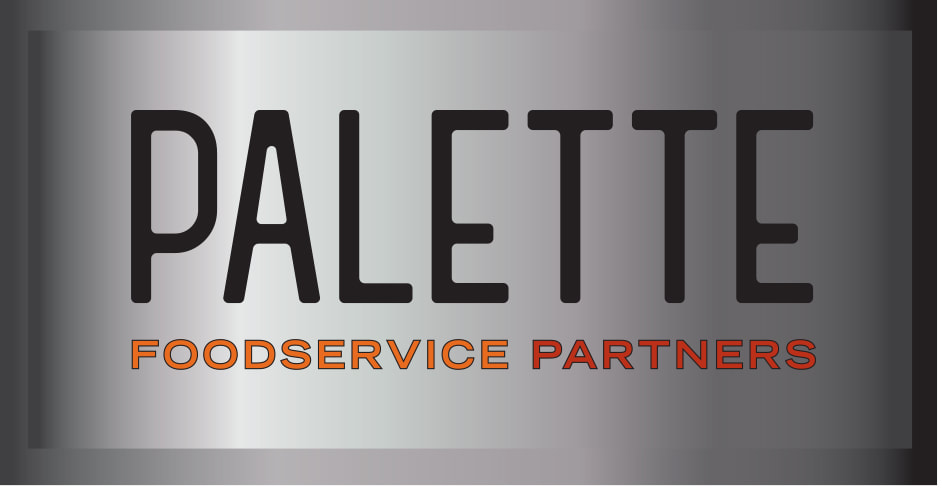 At the time of this writing, it had just been announced that the U.S. inflation rate had dropped to 3 percent in June, a two-year low. It’s long-awaited good news for restaurant operators. To be sure, waning inflation could boost restaurant business indirectly because consumers are more optimistic about spending and less concerned about the prospects of recession. However, the news isn’t without some potential challenges. Restaurants continue to hike their prices faster than grocery stores, which a recent Restaurant Business report predicts could push lower-income consumers to shift their spending. Restaurants seem to be moving toward more moderate price increases, but it will continue to be important for operators to conduct ongoing analyses of their menu pricing, manage their inventory closely to stay ahead of supply chain snags, have back-up plans in place in case key ingredients aren’t available, and to price menu items in line with those trends. If you need assistance in managing these changes – or in finding ways to bring some stability to your costs and continue to offer value to your guests in a shifting economy – contact Team Four/Value Four for help.  A March survey of U.S. restaurant guests had some revealing findings. Revenue Management Solutions, which surveyed 800 restaurant guests about their dining habits, found that higher-income households and families with children were driving decreases in traffic across all restaurant segments. The share of higher-income households (those earning more than $99,000 annually) that reported spending more of their disposable income on restaurants dropped significantly – 73 percent in the fourth quarter of 2022 as compared to 37 percent in the first quarter of this year. A Modern Restaurant Management report about the survey points to inflation being the likely cause of the change – and it’s also generating a shift in habits, with more guests willing to collect restaurant food in person than pay extra for delivery. If this is your experience, consider it an opportunity to elevate your in-person marketing efforts. How can you bring your brand front of mind for guests in ways not available to you if you were sending the same order through a third-party delivery company? Could you provide special last-minute offers to those collecting their meals? Extra loyalty points? Suggest additional items to complement an order? Then consider how smooth you make the collection process, whether through lower-tech means like easy curbside pickup or dedicated parking, or higher-tech means like geofencing to ensure a person’s order is hot and ready to go as soon as they arrive.  To be sure, restaurants are still feeling the pain of inflation -- even more so than other sectors of the economy. In the last quarter of 2022, some operators scaled down their hiring plans, even over the busy holiday season, according to a report from Alignable. But a recent report from CNBC indicates that inflation impacts large, national or international brands differently than it impacts smaller independent brands -- and surviving this period of high inflation is about all of these businesses leaning on the different advantages they possess. For instance, powerful brands like Starbucks or Domino's can use their size and buying power to leverage better prices on ingredients -- but being nimble enough to make quick menu changes can be far more difficult for them. On the flip side, while independent brands may lack the resources and buying power of larger brands, their reputation for authenticity can benefit from public goodwill. Consumers tend to want to support small businesses in tough economic times. With that in mind, restaurants can lean into their unique advantages -- large brands can play up the value they can offer right now, while smaller ones may have more leeway on price if they can promote the authenticity of their brand and the people behind it.  As consumers have paid more at the grocery store and elsewhere due to rising inflation in recent months, they have largely taken rising restaurant costs in stride. But recent reports indicate this could be changing as some foodservice businesses have continued to raise prices after covering their own inflation-related costs. Some operators, particularly of fine-dining restaurants, are now receiving pushback from regular guests taking issue with added fees that don’t seem to add up – whether it's the doubling of the cost of a bowl of pasta or an inexplicably higher corkage fee for a bottle of wine. To be sure, in an industry of slim profit margins and amid forecasts of a looming recession, operators may be trying to eke out a financial cushion wherever they can. Just know that you may get some resistance from guests – and you may be pushed into a situation where you are honoring previous prices for loyal patrons or otherwise bending your own rules to keep guests coming back. Prepare your staff by explaining the reasoning behind any significant price increases you have implemented, helping them answer guest questions with transparency, and, where possible, avoiding making price increases that may appear to have a flimsy rationale backing them up. To help make big pricing jumps less necessary, bring as much efficiency to your kitchen as possible – from ingredient selection, to waste management, to portion sizing. For example, many chefs report shopping farmer’s markets regularly to integrate even more local, plant-forward options into the menu where possible, since this can minimize significant price spikes and help a restaurant avoid passing them on to guests.  How much of a price increase is too much for guests? Amid record-setting inflation, it’s a question that many restaurant operators are struggling to answer. A recent study by Revenue Management Solutions may provide some insight into the tipping point. While the research focused on quick-service restaurants, it provides a starting point for assessing price across the menu in other restaurant categories – and an incentive to maximize profitability and value. QSR Magazine reported that RMS analyzed in-store price increases during the second quarter of this year over the second quarter of last year at 25,000 quick-service restaurant locations across the country. It found that net sales hit their highest point at around 13 percent. Beyond that, price increases negatively impacted traffic so much so that net sales began to decline. Further, some locations found that declines in traffic began at around the 6 percent increase mark. While this study represents one data point to consider, it reinforces the need to ensure your individually priced items maximize profitability when it comes to ingredients and labor. Where you have menu items that can easily be bundled to boost check totals, emphasize value – consumers continue to seek it out as a means of justifying food spending.  The past few years have been a time of reinvention for restaurants and now, amidst inflation and with a likely recession ahead, restaurant brands need to be creative and resourceful to remain in business. Virtual brands, once touted as a helpful means of diversifying business when dining rooms had to close, have now been around long enough for more nuanced assessments to emerge. Michael Jacobs, co-founder and the original CEO of Ordermark and someone who helped conceive of Nextbite, recently told The Spoon that virtual brands are hardly a lifeboat for a restaurant that is floundering. Really, their value lies in expense savings – benefiting from joint purchasing power and shared business resources. They may well make good business sense, though mostly for restaurants that can identify several complementary brands that have similar needs. Call Team Four Foodservice to find out how they can help you leverage your buying power.  Menu price inflation hit a 40-year high in March as operators continued increasing prices to compensate for their own spikes in expense, according to federal data released in April. But as consumers face escalating costs at home and restaurants struggle to bring guests back in high numbers, how much of a cost increase on the menu is too much? Matthew Lukosavich, strategy director for the restaurant division of Vericast, told Fast Casual recently that he advises operators to start by raising prices in line with inflation, which is currently around 7-8 percent. From there, try to stay within your ideal ratio for food cost to gross food revenue. Then, find ways to elevate experience and value to make restaurant meals feel more worthwhile. That could mean keeping costs the same but adjusting portion size or substituting a different cut of a meat. You could also lean on limited-time offers to help repackage or resize profitable items. Scrutinize your food and labor costs – maybe there is a marinade that you have always prepared in-house that can easily be swapped out for something ready-made. Consider changing up how you promote your most profitable items through photographs and placement on your menu. To be sure, some costs will feel too high for guests to bear – but who knows? If their spending limit is a bit higher than you think it is, you don’t want to leave money on the table. On the other hand, talk of recession on the horizon may mean your guests are more cautious than usual. Finding ways to make their order feel worthwhile can give you a better sense of where to place that cost boundary without losing profits or guests.  So much can feel out of control right now with regard to the supplies you need to run your business. One supply (among many) that has been climbing in price and scarcity in recent months is natural gas. In September, CNBC reported that prices had climbed 99 percent higher on a year-to-date basis due to escalating demand and concerns around supply. But unlike the many other items in short supply right now, natural gas consumption is something you can take active steps to reduce in your business without a significant downside. If you experience an especially cold winter or simply broad fluctuations in the traffic coming to you, being more efficient with your natural gas usage in cooking, washing and heating could generate significant savings. The Rail suggests that when cooking, aim to avoid overusing appliances – so limit the time you spend preheating, avoid using a larger oven when a smaller one will do, precook foods in a steamer prior to frying, limit use of the range top and schedule your cooking to ensure you are making most efficient use of ovens and cooktops. When washing, wait to use your dishwasher until it is full, turn off water heaters when the restaurant is closed, and ensure that water tanks and pipes are well insulated. When heating, use smart thermostats and set them to align with the business schedule and occupancy. Finally, keeping appliances maintained, clean, and free of buildup – whether grease, limescale or dust – can help ensure you’re not overusing energy.  Amid supply shortages, rising food prices and wages, and inflation increasing at the highest rate since 1982, restaurant operators have had no choice but to pass some of their costs on to customers. Accordingly, menu price inflation hit a 39-year high in November. Data from the U.S. Bureau of Labor Statistics indicated that prices for limited-service restaurants, which have been hit especially hard by labor shortfalls, have increased nearly 8 percent in the past year, while prices for full-service restaurants have increased 6 percent. While the environment continues to pose challenges to restaurants, there are steps operators can take to strengthen their position. In the back of the house, it’s more important than ever to have a keen grasp of menu costs and to use forecasting tools for inventory and sales in order to minimize waste and find suitable substitutes for ingredients that aren’t available. In the front of the house, it’s crucial to show customers that you provide an experience worth paying for – and one that many of them continue to crave as the pandemic keeps people at home. Consider how to make your offerings special – by elevating the dining experience in-house and developing creative menus that guests wouldn’t prepare for themselves at home. Finally, while you don’t necessarily want to draw guests’ attention to price increases, you can share the efforts you are making to contain costs and source quality ingredients. After all, consumers are paying more at the grocery store now too – so a higher bill at their favorite restaurant shouldn’t come as a shock.  As the supply chain is being impacted by factors including labor shortages, extreme weather, gaps in the availability of raw ingredients, and a spike in demand from consumers returning to foodservice outlets, businesses at every link in the supply chain are feeling the stress. At a time when some foodservice operators have been completely dropped by their distributor(s), the strength of your partnerships is paramount. At the time of this writing, the average fill-rate from manufacturers to distributors was running below 85 percent. But the service level for Premier Value 4 members is considerably higher than this average. That is due to the work our distribution partner, US Foods, is doing to rebalance inventory to provide our members with the best possible service. In recent quarterly earnings releases, US Foods and Sysco disclosed their food cost inflation rates: 8.2 percent and 10.2 percent, respectively. To keep this in context, a normal food cost inflation would be in the 2-3 percent range. Value 4 members have protection against this inflation with contracted manufacturer agreements (CMA). CMA’s give access to 350 vendors covering 105,000 products. Over the past 15 years, inflation on CMA products has been half of the inflation of non-CMA products. Our CMA contracts are firmly in place and while we will not know if that 50 percent “savings” rate is less or more until the current hyper-inflationary period has settled, we are confident that using CMA products is your best protection against inflation – and will offer extra security until we return to conditions that feel closer to normal. If you do not have these protections from your suppliers and partners, consider calling Value 4 to see if you qualify for our programs. |
Subscribe to our newsletterArchives
April 2024
Categories
All
|




 RSS Feed
RSS Feed